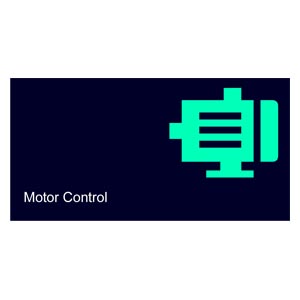ENG_994970.XML
|
Motor Control Functions
|
|
Motor Control Functions
Control philosophy
|
|
Drives
|
SINAMICS S
Multi-axis
|
|
SINAMICS G
|
SINAMICS S
Single-axis
|
|
Control mode
|
Vector Control
|
Servo Control
|
|
Standard Drive Control
|
Dynamic Drive Control
|
Expert Mode
|
|
- Pumps, fans and compressors with flow characteristic
- Blasting technology
- Mills, mixers, kneaders, crushers, agitators
- Horizontal conveyor technology
- Basic spindles
|
- Demanding applications with high utilzation of the motor/converter
- Pumps and compressors with displacement machines
- Extruders
- Centrifuges
- Vertical conveyor technology
|
- All applications
- All setting options are available
|
- Special closed-loop control for highest dynamics servo motor applications
- Especially important for machine tool applications
|
|
Required data
|
Rated speed and rated current
|
Rated speed, rated current and rated power
|
Depending on commissioning routine
|
Depending on commissioning routine
|
|
Focus
|
Easy & fast commissioning for the untrained user
|
Simplified commissioning for most applications
|
Maximum performance for the expert user
|
Maximum performance for the expert user
|
Motor control modes
The control methods are the core of the entire converter firmware. They are responsible for optimum movement of the connected motor and the attached machines.
The better the control functions, the faster, better and more smoothly the machine operates, thereby significantly enhancing the quality of the production output.
Open loop control
The V/f open-loop control characteristic is the simplest way to control an induction motor.
Several different characteristics, e. g. linear or parabolic, can be configured.
In addition, basic functions like slip compensation, voltage boost or resonance damping are supported.
Universal closed-loop control (Vector Control)
The vector control emulates the motor as precisely as possible to obtain the best results regarding control precision and control quality.
For most applications and motors, the closed-loop vector control is the perfect choice. It is optimized for both Siemens and 3rd party motors.
Unknown motors – regardless of the technology (induction, synchronous reluctance, permanent magnet synchronous) – can be identified and commissioned easily.
The vector control is characterized by features like
- Best speed accuracy
- Best speed ripple
- Best torque accuracy
- Best torque ripple
- Optimized for control with or without encoder
Closed-loop control for highest dynamics (Servo Control)
In the servo control mode, the connected motor is emulated in a vector model based on its equivalent circuit diagram data.
Consequently, the servo control constitutes a field-oriented control. In contrast to vector control, the vector model is optimized according to other criteria in servo control.
In favor of achieving a high dynamic performance, a small deterioration in the control accuracy and control quality is accepted.
Special features of the servo control include
- Maximum computing speed
- Shortest sampling times
- Maximum dynamic performance
- High output frequencies
- Preferably used with permanent magnet synchronous motors with encoder for the appropriate dynamic performance
General control loop structures
Both servo and vector control share some common used control-loop structures:
- Extended brake control. It allows complex brake controls, such as for motor holding brakes and service brakes.
- Setpoint channel. It is the link between the setpoint source and the motor control. The converter has a special feature that supports simultaneous input of two setpoints. Generation and subsequent modification of the total setpoint (influencing the direction, skip frequency, up/down ramp) take place in the setpoint channel.
- Command sources. Different sources of command usually result from the requirements to operate a drive from different places (on-site/remote), in different situations (standard/emergency mode) and/or different operating. The BICO binector connector technology allows SINAMICS to configure and combine the command and setpoint sources completely individually.
- Limiters or limits are used to constrain input and/or output variables as appropriate to the connected machine; this means that not all positioning variables are used over their full range but are limited judiciously to enhance the safety and quality of the production process.
- Pulse frequency & modulation.
Several different pulse frequencies possible to adjust the drive to the application including asynchronous pulse frequencies to minimize derating and mechanical resonances.
In addition, wobbling is available to generate a more pleasant acoustic experience.
Taking the tour will redirect you to our new platform. You can always come back either by hitting back button on the browser or by opening the URL again.
